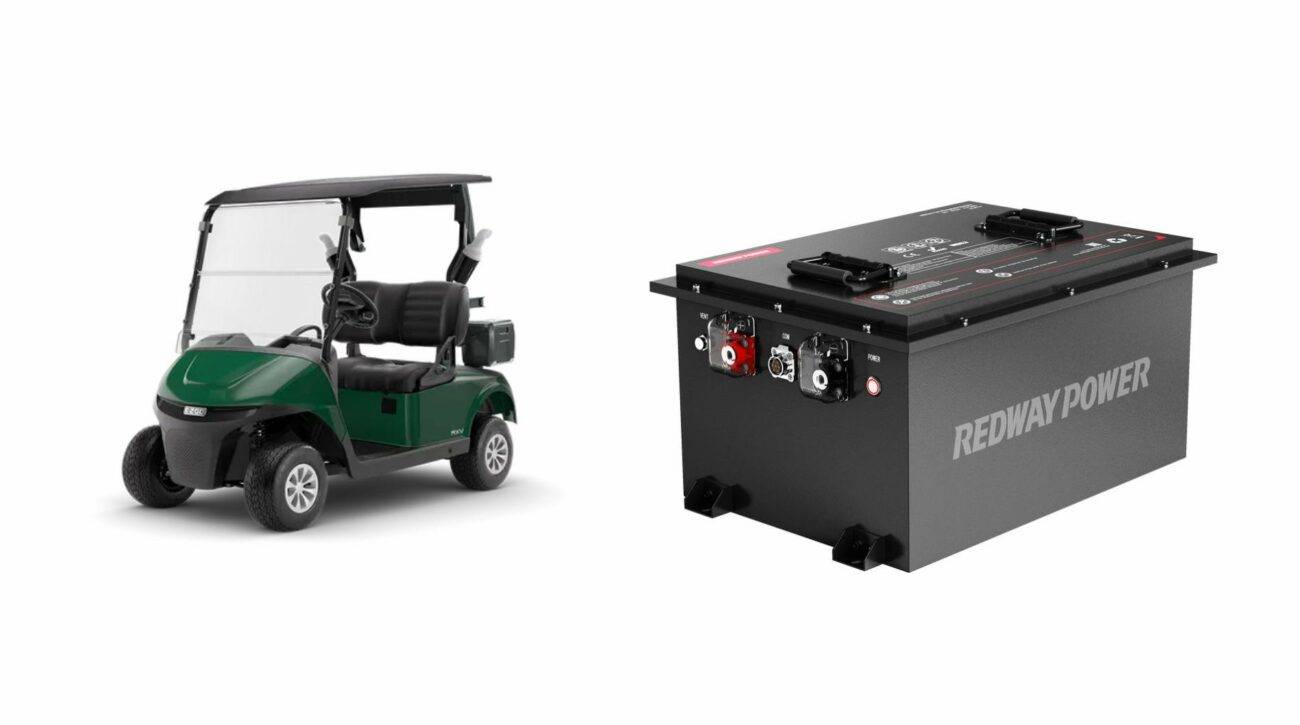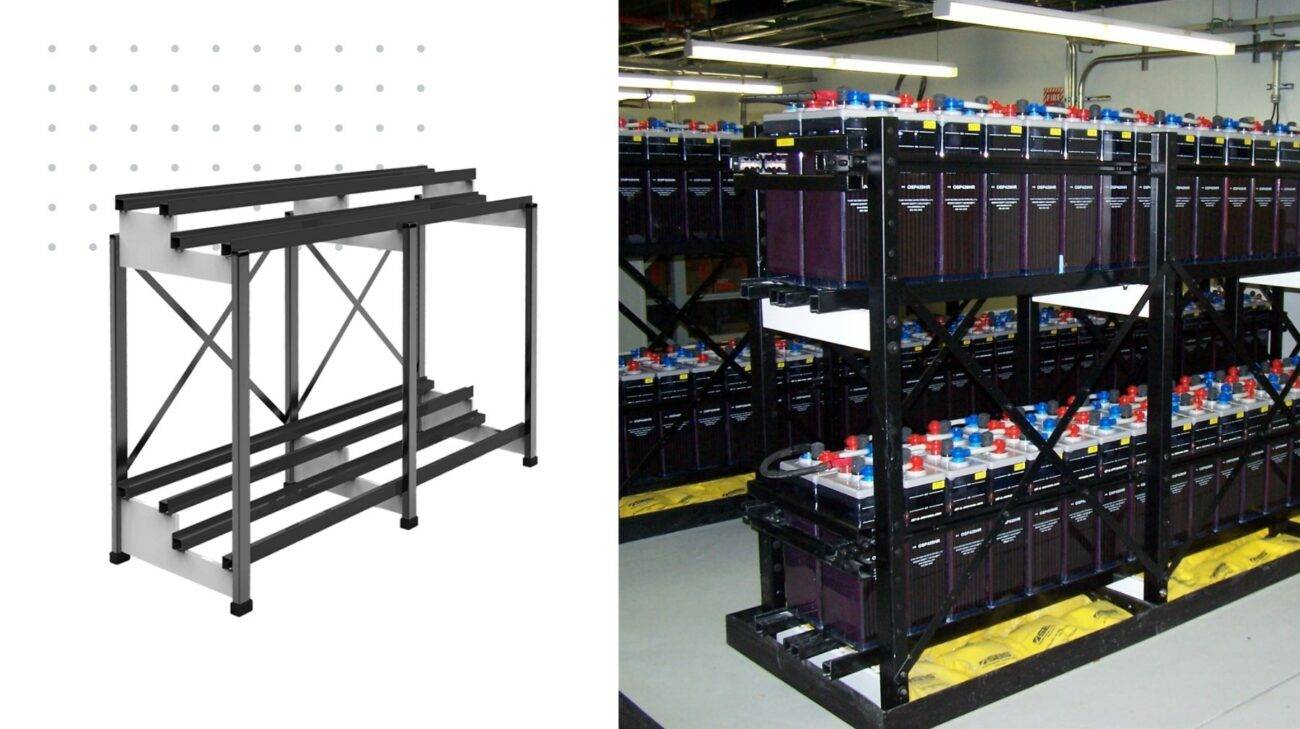- Forklift Lithium Battery
-
48V
- 48V 210Ah
- 48V 300Ah
- 48V 420Ah (949 x 349 x 569 mm)
- 48V 420Ah (950 x 421 x 450 mm)
- 48V 456Ah
- 48V 460Ah (830 x 630 x 590 mm)
- 48V 460Ah (950 x 421 x 450 mm)
- 48V 460Ah (800 x 630 x 600 mm)
- 48V 460Ah (820 x 660 x 470 mm)
- 48V 500Ah
- 48V 560Ah (810 x 630 x 600 mm)
- 48V 560Ah (950 x 592 x 450 mm)
- 48V 600Ah
- 48V 630Ah
-
48V
- Lithium Golf Cart Battery
- 12V Lithium Battery
12V 150Ah Lithium RV Battery
Bluetooth App | BCI Group 31
LiFePO4 Lithium
Discharge Temperature -20°C ~ 65°C
Fast Charger 14.6V 50A
Solar MPPT Charging - 24V Lithium Battery
- 36V Lithium Battery
- 48V Lithium Battery
-
48V LiFePO4 Battery
- 48V 50Ah
- 48V 50Ah (for Golf Carts)
- 48V 60Ah (8D)
- 48V 100Ah (8D)
- 48V 100Ah
- 48V 100Ah (Discharge 100A for Golf Carts)
- 48V 100Ah (Discharge 150A for Golf Carts)
- 48V 100Ah (Discharge 200A for Golf Carts)
- 48V 150Ah (for Golf Carts)
- 48V 160Ah (Discharge 100A for Golf Carts)
- 48V 160Ah (Discharge 160A for Golf Carts)
-
48V LiFePO4 Battery
- 60V Lithium Battery
-
60V LiFePO4 Battery
- 60V 20Ah
- 60V 30Ah
- 60V 50Ah
- 60V 50Ah (Small Size / Side Terminal)
- 60V 100Ah (for Electric Motocycle, Electric Scooter, LSV, AGV)
- 60V 100Ah (for Forklift, AGV, Electric Scooter, Sweeper)
- 60V 150Ah (E-Motocycle / E-Scooter / E-Tricycle / Tour LSV)
- 60V 200Ah (for Forklift, AGV, Electric Scooter, Sweeper)
-
60V LiFePO4 Battery
- 72V~96V Lithium Battery
- Rack-mounted Lithium Battery
- E-Bike Battery
- All-in-One Home-ESS
- Wall-mount Battery ESS
-
Home-ESS Lithium Battery PowerWall
- 24V 100Ah 2.4kWh PW24100-S PowerWall
- 48V 50Ah 2.4kWh PW4850-S PowerWall
- 48V 50Ah 2.56kWh PW5150-S PowerWall
- 48V 100Ah 5.12kWh PW51100-F PowerWall (IP65)
- 48V 100Ah 5.12kWh PW51100-S PowerWall
- 48V 100Ah 5.12kWh PW51100-H PowerWall
- 48V 200Ah 10kWh PW51200-H PowerWall
- 48V 300Ah 15kWh PW51300-H PowerWall
PowerWall 51.2V 100Ah LiFePO4 Lithium Battery
Highly popular in Asia and Eastern Europe.
CE Certification | Home-ESS -
Home-ESS Lithium Battery PowerWall
- Portable Power Stations
How Many 6V Batteries to Make 48V?
When working with 48-volt golf carts or other high-voltage systems, understanding how to configure batteries is crucial for achieving optimal performance and longevity. In this detailed guide, we will address key questions about using 6-volt batteries to create a 48-volt system, compare 6-volt versus 12-volt batteries, and discuss other related considerations.
1. How Many 6V Batteries to Make 48V?
To achieve a 48-volt configuration using 6-volt batteries, you will need to connect eight 6-volt batteries in series. In a series configuration, the voltages of each battery add up. Thus, connecting eight 6-volt batteries will provide a total voltage of 48 volts (6V x 8 = 48V).
Here’s a step-by-step outline on how to connect them:
- Connect the Positive Terminal of the first battery to the Negative Terminal of the second battery.
- Continue this Pattern until all eight batteries are connected in a series.
- The Positive Terminal of the final battery in the series will be your positive output, and the Negative Terminal of the first battery will be your negative output.
This configuration ensures that each battery contributes to the total voltage, achieving the desired 48 volts.
2. Can You Use 6 Volt Batteries in a 48 Volt Golf Cart?
Yes, you can use 6-volt batteries in a 48-volt golf cart, provided they are connected properly to achieve the required voltage. Many golf carts are designed to use 6-volt batteries because they offer a good balance between cost and performance. Six-volt batteries are often used in pairs or groups to create a battery bank that meets the necessary voltage requirements for the cart.
3. Are 2 6 Volt Batteries Better Than 2 12 Volts?
When comparing 2 six-volt batteries to 2 twelve-volt batteries, the answer depends on the specific application and system requirements.
- Energy Density: Typically, a single 12-volt battery has a higher energy density compared to a single 6-volt battery of the same physical size. Therefore, 12-volt batteries can provide more power in a smaller space.
- Maintenance and Replacement: 12-volt batteries can be more convenient since you have fewer connections to manage. In contrast, using multiple 6-volt batteries involves more connections and potential maintenance.
- Cost Efficiency: 6-volt batteries are often less expensive per unit of capacity compared to 12-volt batteries. However, you may need more 6-volt batteries to achieve the same total voltage, which could increase overall costs and complexity.
4. Is a Higher Ah Battery Better in a Golf Cart?
In a golf cart, a higher Ampere-hour (Ah) rating generally means the battery can provide power for a longer duration before needing a recharge. This can be advantageous for extended use or longer trips. However, it’s important to balance Ah capacity with the physical space available and the electrical requirements of the cart.
- Higher Ah Rating: Provides more runtime and can handle longer or more demanding usage.
- Proper Sizing: Ensure that the higher Ah battery is compatible with the cart’s electrical system and fits within the designated battery compartment.
5. Can You Put 4 12 Volt Batteries in a 48-Volt Golf Cart?
Yes, you can use four 12-volt batteries to create a 48-volt system in a golf cart. To achieve this, connect the batteries in series:
- Connect the Positive Terminal of the first battery to the Negative Terminal of the second battery.
- Repeat the Process with the remaining two batteries.
- The Positive Terminal of the last battery will serve as your positive output, and the Negative Terminal of the first battery will be your negative output.
This series configuration will provide a total of 48 volts (12V x 4 = 48V).
6. Do Golf Cart Batteries Discharge When Not in Use?
Yes, golf cart batteries can discharge even when not in use. This is due to several factors:
- Self-Discharge Rate: All batteries have a natural self-discharge rate. Over time, the battery will lose charge even if it is not being used.
- Battery Health: Older or poorly maintained batteries may discharge more quickly.
- Environmental Factors: Temperature extremes and humidity can affect the rate of discharge.
To minimize discharge, ensure that batteries are stored in a cool, dry place and are regularly maintained.
7. How to Make 2 6 Volt Batteries into 12 Volts?
To convert two 6-volt batteries into a 12-volt system, connect them in series:
- Connect the Positive Terminal of the first 6-volt battery to the Negative Terminal of the second 6-volt battery.
- The Positive Terminal of the second battery will be your positive output, and the Negative Terminal of the first battery will be your negative output.
This configuration will provide a combined output of 12 volts (6V + 6V = 12V).
Redway Power’s Expertise in Golf Cart Batteries
At Redway Power, we specialize in providing high-quality 48V golf cart batteries. With extensive experience in manufacturing LiFePO4 batteries, we offer customized solutions to meet your specific needs. Whether you are a B2B client or an OEM, our team is ready to provide rapid and reliable battery solutions.
Contact Redway Power today for a quick quote and experience the reliability and performance of our advanced battery technologies.
Know more:
What You Need to Know About 6 Volt Forklift Batteries
6 volt forklift batteries are commonly used in electric forklifts and other industrial equipment. They are typically lead-acid batteries designed for deep-cycle applications, providing reliable power over extended periods. These batteries require regular maintenance, including checking electrolyte levels and ensuring proper charging practices to maximize lifespan and performance.
What Are the Benefits of Using 6 Volt Forklift Batteries?
The benefits of using 6 volt forklift batteries include their affordability, availability, and compatibility with various equipment. They provide consistent power for long operational hours and are designed for deep discharge cycles. Additionally, they can be easily replaced and maintained, making them a practical choice for many industrial applications.
How Long Do 6 Volt Forklift Batteries Last?
6 volt forklift batteries typically last between 1,500 to 2,000 charge cycles, equating to approximately 3 to 5 years of service life. Their longevity depends on factors such as usage patterns, maintenance practices, and charging methods. Regular care can significantly extend their operational lifespan.
How Should I Maintain My 6 Volt Forklift Battery?
To maintain your 6 volt forklift battery, regularly check the electrolyte levels and top up with distilled water as needed. Clean the terminals to prevent corrosion and ensure secure connections. Follow proper charging procedures and avoid deep discharges to enhance battery performance and longevity.
What Should I Consider When Replacing a 6 Volt Forklift Battery?
When replacing a 6 volt forklift battery, consider the battery’s amp-hour rating to ensure it meets your operational needs. Check compatibility with your forklift model and review dimensions to ensure a proper fit. Additionally, assess the maintenance requirements of the new battery type for optimal performance.
























